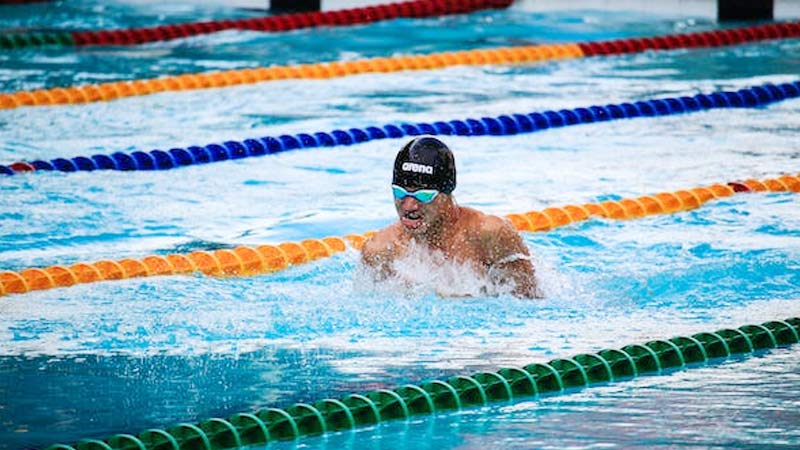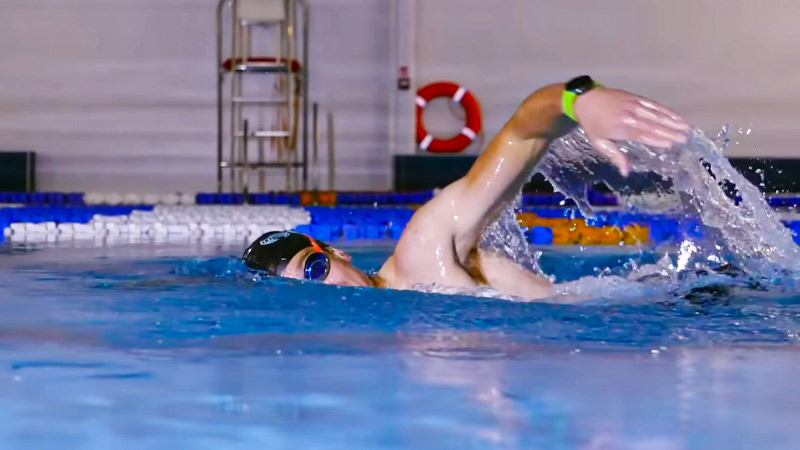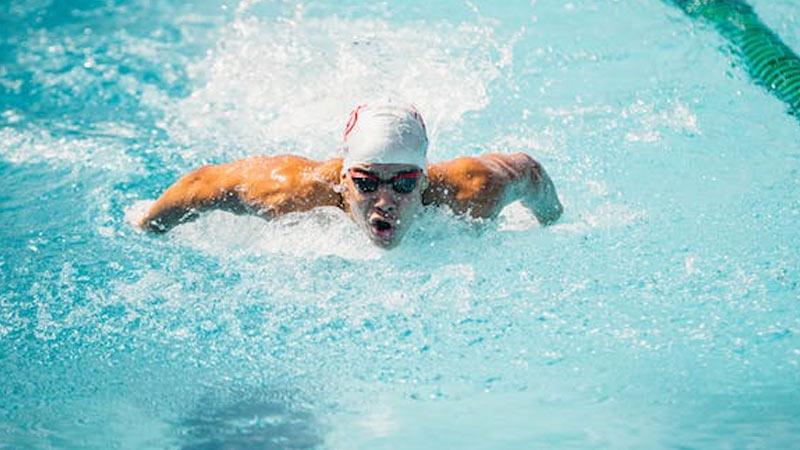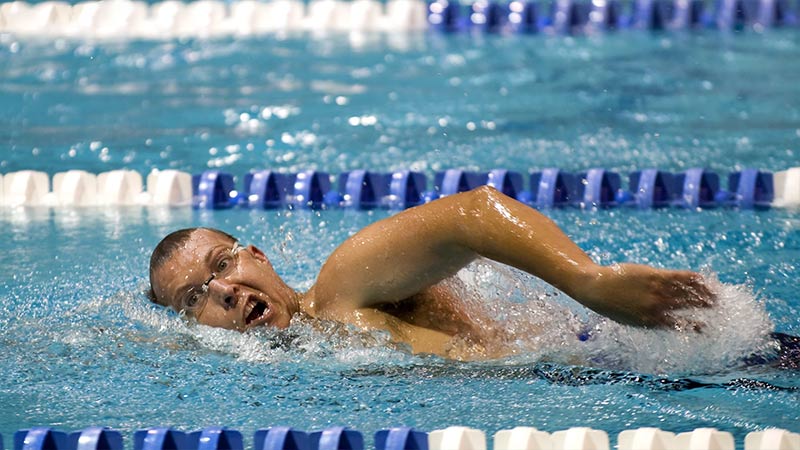Swimming is a popular and refreshing activity enjoyed by millions worldwide. However, there’s a common belief that swimming can naturally clean your ears.
In this blog post, we’ll dive deep into the truth behind this perception and explore the complex relationship between swimming and ear health.
While it’s true that swimming can have some impact on the hygiene of your ears, the reality is far more nuanced.
This post will uncover the myths surrounding swimming as an ear-cleaning method, providing you with insights into what it can and cannot do for your ear health.
From the effects of chlorine in pool water to the risks of earwax impaction and infections, we’ll unravel the facts so that you can swim with a clear understanding of how it affects your ears.
Does Swimming Clean Your Ears?
Many people have a positive belief in the question of whether swimming helps remove ear wax.
Swimming can potentially lead to water getting trapped in your ears, which may cause discomfort and, in some cases, increase the risk of ear infections.
Water in the ears can create a moist environment that is conducive to the growth of bacteria.
It can also lead to a condition called swimmer’s ear, which is an infection of the ear canal. Symptoms of swimmer’s ear can include itching, pain, redness, and drainage from the ear.
However, it’s important to note that swimming itself is not a method of cleaning your ears.
In fact, inserting objects like cotton swabs or other items into your ear canals to try to clean them is not recommended, as it can push earwax deeper into the ear canal, potentially causing impaction or injury.
Chlorine Ear Wax and Swimming

Chlorine, which is commonly used to disinfect swimming pool water, can sometimes affect earwax. Chlorine can dry out earwax, making it harder and more likely to become impacted in the ear canal.
Impacted earwax can cause discomfort, and hearing problems, and potentially lead to other issues like a swimmer’s ear if water becomes trapped behind the blockage.
Here’s how chlorine and swimming can potentially affect earwax:
- Dry Earwax: Exposure to chlorine-treated pool water can dry out the earwax, making it stickier and more likely to accumulate in the ear canal.
- Earwax Impaction: The combination of dry earwax and water exposure during swimming can contribute to earwax impaction.
- Water in the Ear: While chlorine-treated water may help disinfect the ear canal to some extent, it can also contribute to water becoming trapped in the ear if earwax is impacted.
To prevent issues related to earwax and swimming in chlorinated water, you can consider the following tips:
- Use Earplugs: Wearing earplugs designed for swimming can help keep water out of your ears and reduce the risk of earwax issues.
- Dry Your Ears: After swimming, make sure to dry your ears thoroughly using a clean towel or by tilting your head to allow water to drain out.
- Avoid Inserting Objects: Avoid inserting cotton swabs or other objects into your ears to clean them, as this can push earwax deeper into the ear canal.
- Seek Medical Advice: If you experience ear discomfort, hearing loss, or signs of infection after swimming, consult a healthcare professional, such as an ear, nose, and throat specialist or a primary care doctor, for proper evaluation and treatment.
Remember that everyone’s earwax production and composition vary, so what works best for one person may not be suitable for another.
If you have recurring issues with earwax, it’s a good idea to discuss your concerns with a healthcare provider who can provide personalized guidance.
The Myth of Ear Cleaning Through Swimming

Whether does swimming help with ear wax or not is always a common misconception. The idea that swimming can effectively clean your ears is a common misconception and, in fact, is a myth.
Swimming may temporarily rinse away some surface dirt and debris from the outside of your ear, but it doesn’t provide a thorough or effective method of ear cleaning for several reasons:
Water Quality
The water in swimming pools, even though chlorinated for disinfection, is not sterile, and it may contain impurities and microorganisms. Rinsing your ears with pool water is not a sanitary way to clean them.
Earwax
If you have earwax in your ear canal, swimming is unlikely to remove it. Earwax is designed to protect the ear canal, and it’s typically not water-soluble.
In fact, getting water into your ears while swimming can lead to water becoming trapped behind earwax, potentially increasing the risk of earwax impaction or ear infections.
Risk of Infection
Swimming can introduce bacteria and other microorganisms into the ear canal, which may increase the risk of ear infections like swimmer’s ear if water becomes trapped in the ear.
If you’re looking to clean your ears or remove excess earwax, it’s best to consult with a healthcare professional or follow their guidance.
They can safely and effectively remove earwax using appropriate methods and tools. In some cases, they may recommend ear drops or irrigation to soften and remove earwax.
Inserting objects like cotton swabs into your ears to clean them is not recommended, as it can push earwax deeper into the ear canal and potentially cause injury.
The Truth About Swimming and Ear Health

Swimming can have both positive and negative effects on ear health, and it’s important to understand how it can impact your ears:
Positive Aspects
- Ear Hygiene: Swimming in clean, well-maintained pools can help remove some dirt and debris from the external part of your ears. The water’s movement can have a cleaning effect, similar to showering.
- Exposure to Chlorine: Chlorine is commonly used to disinfect pool water, which can reduce the risk of certain types of infections. It can help to kill some harmful bacteria that might enter your ears while swimming.
Negative Aspects
- Earwax Issues: As mentioned earlier, chlorine-treated water can dry out earwax, making it stickier and more likely to become impacted in the ear canal. Earwax impaction can lead to discomfort and hearing problems.
- Water Trapped in the Ears: Water can easily become trapped in the ears while swimming, especially if there’s earwax already present.
This trapped water can create a moist environment, which can lead to bacterial growth and increase the risk of a swimmer’s ear, an ear infection of the ear canal.
To maintain good ear health while swimming, consider these tips:
Use Earplugs
Wearing waterproof earplugs designed for swimming can help keep water out of your ears and reduce the risk of earwax issues and infections.
Dry Your Ears
After swimming, take the time to dry your ears gently but thoroughly using a clean, dry towel. You can also tilt your head to the side to allow any trapped water to drain out.
Avoid Inserting Objects
Avoid using cotton swabs or other objects to clean your ear canals, as they can push earwax deeper and potentially cause injury.
Consult a Healthcare Professional
If you experience discomfort, hearing loss, or signs of infection in your ears after swimming, seek medical advice from a healthcare provider, such as an ear, nose, and throat specialist or a primary care doctor.
Remember that ear health can vary from person to person, so it’s essential to be attentive to your own needs and seek professional advice if you have concerns about your ear health or earwax management.
Ear Problems Caused by Swimming

Swimming can sometimes lead to various ear problems, especially if proper precautions and care are not taken. Here are some common ear problems associated with swimming:
Swimmer’s Ear (Otitis Externa)
Swimmer’s ear is an infection of the outer ear canal, typically caused by water becoming trapped in the ear and creating a moist environment conducive to bacterial growth.
Symptoms include ear pain, itching, redness, and discharge. Swimmer’s ear can be painful and may require treatment with antibiotic ear drops.
Otitis Media
Otitis media is an infection or inflammation of the middle ear, which is located behind the eardrum.
Although it is not directly caused by swimming, water entering the ear can sometimes contribute to otitis media if bacteria from the ear canal make their way into the middle ear.
Symptoms may include ear pain, pressure, and sometimes fever.
Earwax Impaction
Swimming in chlorinated water can lead to dry earwax, which may become sticky and more likely to accumulate in the ear canal.
This can result in earwax impaction, causing discomfort, hearing problems, and a feeling of fullness in the ear.
Tinnitus
Prolonged exposure to the noise of pool filtration systems, or other noisy pool equipment, can potentially lead to tinnitus, a ringing or buzzing sound in the ears.
Exostoses (Surfer’s Ear
Frequent exposure to cold water while swimming, particularly in cold ocean waters, can lead to the development of exostoses, and bony growths in the ear canal.
These growths can partially block the ear canal and increase the risk of ear infections.
To prevent or manage these ear problems associated with swimming:
- Use earplugs designed for swimming to prevent water from entering your ear canals.
- Dry your ears thoroughly after swimming to remove trapped water.
- Avoid inserting objects, such as cotton swabs, into your ears, as they can push earwax deeper and potentially cause injury.
- If you experience persistent discomfort, pain, hearing loss, or signs of infection after swimming, seek medical advice from a healthcare professional, such as an ear, nose, and throat specialist or a primary care doctor.
- Taking proper precautions and maintaining good ear hygiene can help minimize the risk of ear problems related to swimming.
FAQs
Does swimming loosen ear wax?
Swimming may help loosen ear wax. The water can soften wax, making it easier for the body’s natural cleaning mechanisms to remove it. However, it’s not a guaranteed method for everyone.
Does swimming clear ear wax?
Swimming can clear ear wax for some individuals. Water in the ear may dislodge softened wax, allowing it to drain out naturally.
But this doesn’t work for everyone, and it’s essential to be cautious to prevent water-related ear issues.
Does swimming get rid of earwax?
Swimming can help get rid of earwax in some cases. The water may soften and dislodge wax, aiding its natural expulsion.
However it isn’t a guaranteed method, and excessive water exposure can cause other ear problems, so caution is needed.
Can swimming prevent ear infections?
While swimming in properly maintained pools can reduce the risk of certain infections due to chlorine disinfection, it can also increase the risk of the swimmer’s ear if water becomes trapped in the ear canal.
Using earplugs and proper ear-drying techniques can help reduce this risk.
How should I maintain ear hygiene while swimming?
To maintain ear hygiene while swimming, consider using waterproof earplugs, drying your ears gently after swimming, and avoiding the use of cotton swabs in the ear canals.
If you experience ear discomfort, seek medical advice from a healthcare professional for proper evaluation and care.
Wrapping Up
Swimming can provide some surface cleaning for the external parts of your ears, but it’s not a reliable method for deep ear canal hygiene.
Instead, it’s essential to take proper precautions to safeguard your ear health while enjoying aquatic activities.
Using earplugs, drying your ears carefully, and avoiding the use of cotton swabs are all practical steps to protect your ears from potential issues like swimmer’s ear and earwax impaction.
Understanding the nuances of how swimming affects your ears is the key to enjoying this wonderful pastime without compromising your ear health.
Remember, while swimming can offer many benefits, your ears still need a more delicate touch to keep them clean and free from problems.







